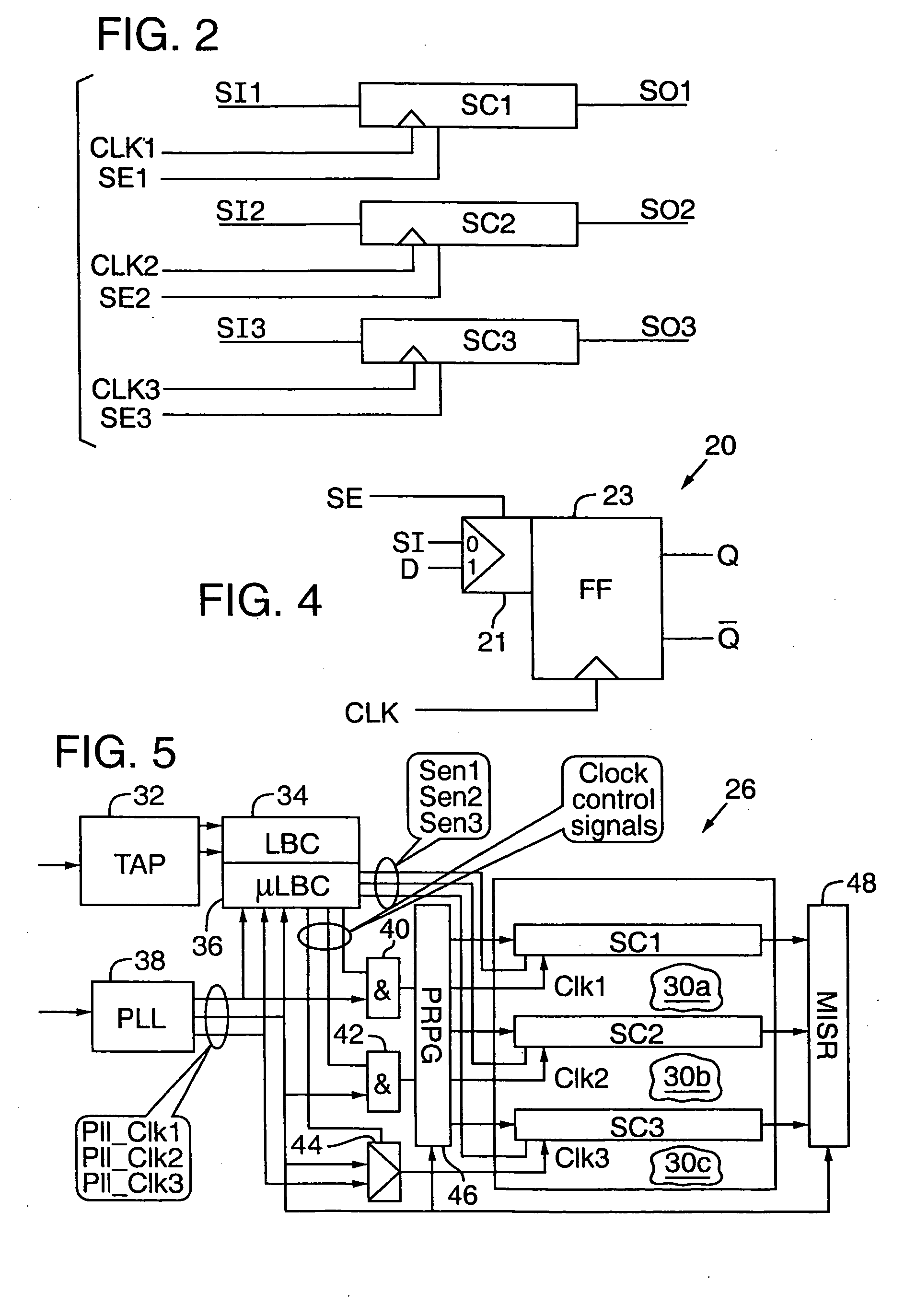Method and apparatus for at-speed testing of digital circuits
a digital integrated circuit and self-testing technology, applied in error detection/correction, instruments, generating/distributing signals, etc., can solve problems such as increasing the number of devices within an ic for testing, increasing the difficulty of digital integrated circuit testing, and increasing the complexity of digital design
- Summary
- Abstract
- Description
- Claims
- Application Information
AI Technical Summary
Benefits of technology
Problems solved by technology
Method used
Image
Examples
Embodiment Construction
[0034]FIG. 4 is a block diagram of a memory element 20 such as a flip flop used as a sequential logic in a digital circuit and as a scan cell in a scan chain. The element includes a two-input multiplexer 21 coupled to the input of an edge-triggered flip flop 23. The two inputs to the multiplexer are data (D) and scan input (SI). The multiplexer control signal is called scan enable (SE) and it determines which of the multiplexer inputs are passed through to flip flop 23. The signal SE selects a test vector as input when the signal is in the scan state and selects data as input when the signal is in the capture state. The flip flop 23 (and hence memory element 20) is clocked by CLK. When the scan enable signal is in the scan state, CLK clocks a test pattern, or vector, sequentially via the SI input through the memory elements within the scan chain until the test vector is completely loaded therein. The combinational logic of the circuit design is decoupled from the scan chain during t...
PUM
 Login to View More
Login to View More Abstract
Description
Claims
Application Information
 Login to View More
Login to View More - R&D
- Intellectual Property
- Life Sciences
- Materials
- Tech Scout
- Unparalleled Data Quality
- Higher Quality Content
- 60% Fewer Hallucinations
Browse by: Latest US Patents, China's latest patents, Technical Efficacy Thesaurus, Application Domain, Technology Topic, Popular Technical Reports.
© 2025 PatSnap. All rights reserved.Legal|Privacy policy|Modern Slavery Act Transparency Statement|Sitemap|About US| Contact US: help@patsnap.com



